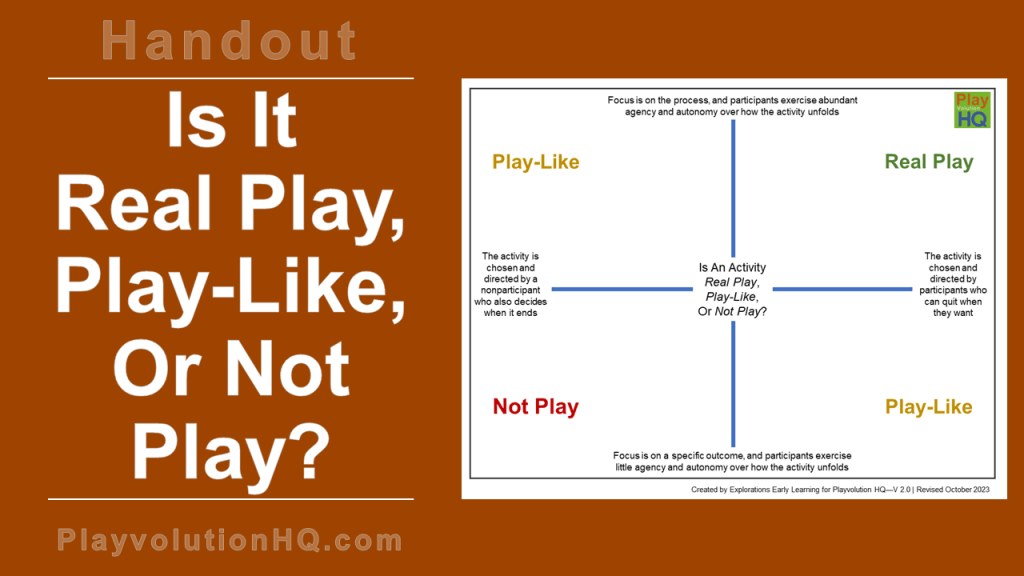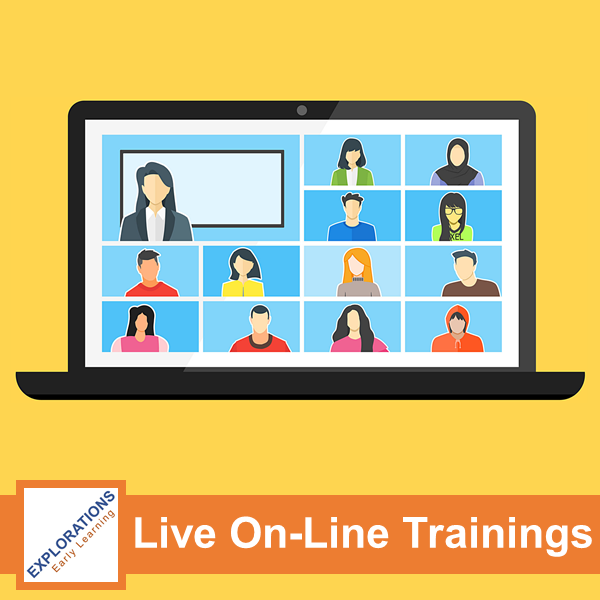Revised | Originally Published: July 3, 2021 @ 4:28 pm

Not everything that looks like play is real play. This handout’s quadrants matrix offers a speedy way to determine if an activity is Real Play, Play-Like, or Not Play. The matrix is based on Peter Gray’s 5 Conditions Of Play.
This handout is a handy tool for helping early learning professionals:
- Understand children’s activities
- Assessing their planning and scheduling
- Manage their play environments
- Contemplating children’s play and exploration
Determine which of the four quadrants the activity you’re observing fits into, and you’ll have a good idea of whether it’s real play or something that just looks playful. We’ll use time spent doing art projects in all the examples.
- Upper Left Quadrant (Play-Like)–A nonparticipant chooses the activity and decides when it ends. The focus is on the process, and participants exert abundant agency and autonomy over how it unfolds. For example, a teacher decides everyone needs to do an art project but gives the kids great leeway in what they create, what materials are used, and how they make their project.
- Upper Right Quadrant (Real Play)–Participants choose the activity and decide when it ends. The focus is on the process, and participants exert abundant agency and autonomy over how it unfolds. For example, kids decide to create something in a process art center where they are free to work until they are done and use materials as they see fit, without any concern about the outcome.
- Lower Left Quadrant (Not Play)–A nonparticipant chooses the activity and decides when it ends. The focus is on a specific outcome, and participants exercise little agency and autonomy on how things unfold. For example, a mandatory art project where everyone follows the same steps and creates nearly identical finished products. (Also known as craptivities here at Playvolution HQ)
- Lower Righ Quadrant (Play-Like)–Participants choose the activity and decide when it ends. The focus is on a specific outcome, and participants exercise little agency and autonomy on how things unfold. For example, kids may choose to spend time in the art center (or not), but the project is predetermined and focused on a specific outcome–maybe a Mother’s Day card or handprint turkey.

Free Is It Real Play, Play-Like, Or Not Play? PDF
Here’s a PDF version of the document you can use as you like.
Defining Play
In these eight episodes, Lisa Murphy and I discuss Peter Gray’s definition of real play:
Is It Real Play, Play-Like, Or Not Play? Wrap-Up
I expect this document will be refined over time as more people use it and offer insights. If you try it, I’d love to hear your thoughts in the comments below.
Related Content
Contribute content to Playvolution HQ
Brought to you by Explorations Early Learning
Browse Trainings

Post Author
Jeff Johnson is an early learning trainer, podcaster, and author who founded Explorations Early Learning, Playvolution HQ, and Play Haven.

Leave a Reply